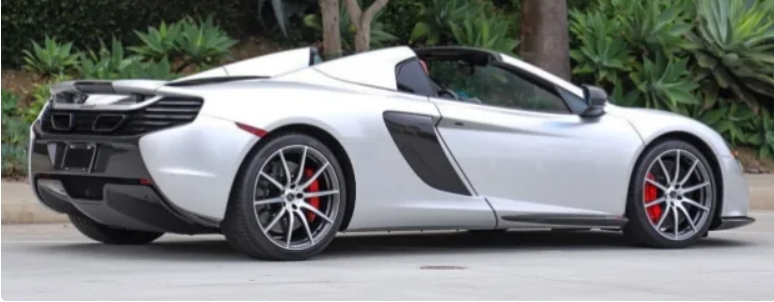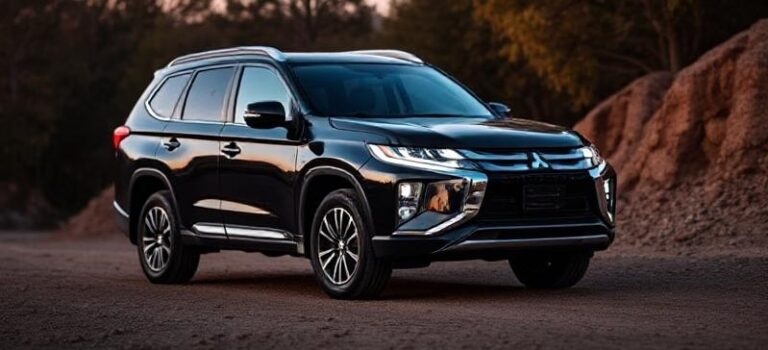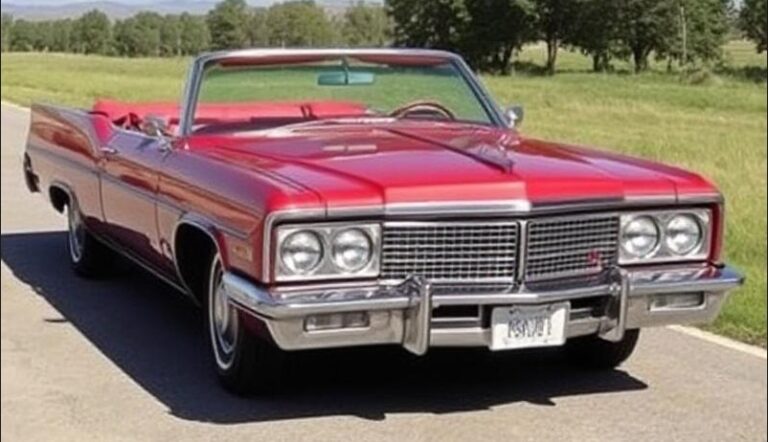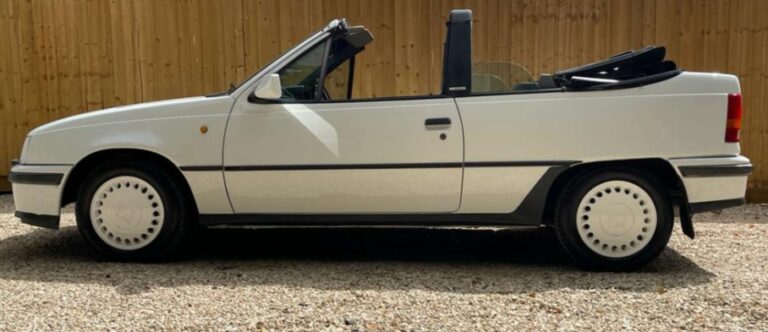The Apex Predator: Charting the Evolution of the McLaren 650S
In the pantheon of modern supercars, few machines represent a more pivotal moment for their manufacturer than the McLaren 650S. It was not merely a new car; it was a statement of intent, a declaration that McLaren Automotive had evolved beyond its clinically brilliant debut and was ready to infuse its technological prowess with raw, unadulterated soul. Produced from 2014 to 2017, the 650S was a short-lived but explosive chapter in McLaren’s history, a bridge between the technically astounding MP4-12C and the revolutionary 720S. This is the story of its evolution, from its core models to its wildly desirable, track-honed special editions.
The Genesis: A Synthesis of Mind and Heart (2014)
To understand the 650S, one must first understand its predecessor, the MP4-12C. Launched in 2011, the 12C was McLaren’s first solo production road car since the legendary F1. It was an engineering marvel, built around a revolutionary one-piece carbon fibre tub—the “MonoCell”—and powered by a bespoke 3.8-litre twin-turbocharged V8. Its ProActive Chassis Control system delivered a ride quality unheard of in the segment, seamlessly blending comfort with razor-sharp handling. Yet, for all its objective superiority, the 12C was often criticized for lacking the emotional flair and dramatic styling of its Italian rivals. It was a scalpel in a world of beautifully crafted broadswords.
By 2014, McLaren had another car in its stable: the P1 hypercar. The P1 was a different beast altogether—a hybrid-powered, aerodynamically sculpted monster that looked as though it had been beamed from the future. Its design language, particularly its distinctive crescent-shaped LED headlights, and its unapologetic focus on extreme performance, had captivated the world.
The McLaren 650S was born from the synthesis of these two vehicles. It was an evolution of the 12C, but so extensive that it warranted a new name. McLaren took the proven MonoCell chassis and M838T engine from the 12C and injected them with the DNA and aggression of the P1. The goal was to create a car that retained the 12C’s usability and technical genius while adding the visceral excitement and visual drama it lacked.
The name itself, “650S,” was a direct communication of its intent: “650” for its metric horsepower output (650 Pferdestärke), and “S” for “Sport.” The changes were substantial:
- Powertrain: The M838T engine received new pistons, cylinder heads, and revised exhaust valve timing, boosting power from the 12C’s 616 bhp to 641 bhp (650 PS) and increasing torque to a formidable 500 lb-ft (678 Nm).
- Aerodynamics: The entire front end was redesigned, adopting the P1’s aggressive nose and signature headlights. This wasn’t merely cosmetic; the new front bumper and splitter increased downforce by 24% at 150 mph. The active Airbrake at the rear was also recalibrated for greater effectiveness.
- Chassis and Brakes: The ProActive Chassis Control software was significantly updated for sharper responses in Sport and Track modes. Carbon-ceramic brakes, an expensive option on the 12C, became standard fitment on the 650S.
The 650S was launched simultaneously in two distinct forms, establishing the core family that would persist throughout its production run.
.

.
The Core Models (2014–2017)
Unlike many manufacturers who offer a confusing array of trim levels, McLaren’s approach was simpler. The primary choice was between a fixed roof or an open sky.
1. McLaren 650S Coupé (2014–2017)
The Coupé was the definitive expression of the 650S vision. It was the purist’s choice, offering the ultimate in structural rigidity and performance. Thanks to the inherent strength of the MonoCell tub, the car felt monumentally stiff and responsive. Performance was blistering: 0-60 mph took a mere 2.9 seconds, 0-124 mph (200 km/h) was dispatched in 8.4 seconds, and the top speed was a searing 207 mph.
The Coupé showcased the perfect balance McLaren had achieved. It was a devastatingly fast and capable track weapon, yet its advanced suspension made it surprisingly comfortable for daily driving or long-distance touring. The interior was driver-focused and minimalist, draped in Alcantara and carbon fibre, with the portrait-oriented IRIS infotainment system at its centre.
2. McLaren 650S Spider (2014–2017)
Often, the convertible version of a supercar is a compromise, trading some structural integrity and performance for the open-air experience. The 650S Spider defied this convention. Because the MonoCell provided all the car’s structural rigidity, removing the roof had a negligible effect on its dynamics. The Spider featured a two-piece retractable hardtop that could be operated at speeds up to 19 mph, folding away neatly in under 17 seconds.
The engineering was so effective that the Spider weighed only 40 kg (88 lbs) more than the Coupé. This minimal weight penalty meant its performance was virtually identical, with a 0-60 mph time of 3.0 seconds and a top speed of 204 mph. Crucially, it offered an unfiltered, multi-sensory experience. With the roof down, the ferocious bark of the V8 engine and the whistle of the turbochargers were an ever-present, thrilling soundtrack directly behind the driver’s head, making it arguably the more emotionally engaging of the two core models.
The Special Editions: MSO and the “Longtail” Legend
While the Coupé and Spider formed the foundation of the 650S line, McLaren used the platform to create some of its most memorable and sought-after limited editions, often crafted by McLaren Special Operations (MSO).
1. McLaren 650S Le Mans (2015)
To celebrate the 20th anniversary of the McLaren F1 GTR’s stunning overall victory at the 1995 24 Hours of Le Mans, MSO created this remarkable tribute. Limited to just 50 units worldwide, the Le Mans edition was more than just a paint-and-trim package. Its most striking feature was a fully functional, roof-mounted engine induction snorkel, a direct nod to the iconic F1 GTR. It also featured unique lightweight alloy wheels inspired by the GTR’s race wheels, carbon fibre front wings with louvres to reduce lift, and was finished exclusively in Sarthe Grey paint.
2. McLaren 650S Can-Am (2015)
Another MSO creation, this edition paid homage to McLaren’s utter dominance of the Can-Am racing series in the late 1960s and early 1970s. Limited to 50 cars, the Can-Am featured a suite of unique carbon fibre components, including the bonnet, Airbrake, and a retractable hardtop—a first for the Spider on which it was based. Louvered front wings, a new quad-exit stainless steel exhaust system, and polished five-spoke wheels echoing the race cars of the era completed the package. The launch colors—Mars Red, Papaya Spark, and Onyx Black—were inspired by the liveries of Bruce McLaren and Denny Hulme’s historic race cars.
3. McLaren 675LT Coupé (2015–2016)
If the 650S was an evolution, the 675LT was a revolution. This was the car that cemented McLaren’s modern reputation for creating truly exceptional, track-focused supercars. The “LT” stood for “Longtail,” a name resurrected from the legendary 1997 McLaren F1 GTR Longtail race car. The philosophy was simple: less weight, more power, enhanced aerodynamics, and ultimate driver engagement.
Limited to 500 units, the 675LT was a comprehensive re-engineering of the 650S:
- Weight Reduction: McLaren embarked on an obsessive weight-saving mission, shedding 100 kg (220 lbs). This was achieved through extensive use of carbon fibre for body panels, thinner windscreen glass, a polycarbonate engine cover, and removing the air conditioning system (though it could be added back as a no-cost option).
- Enhanced Powertrain: Over 50% of the M838T engine’s components were new. Lightweight titanium connecting rods and camshafts, combined with more efficient turbochargers and a new titanium crossover exhaust, pushed power to 666 bhp (675 PS).
- “Longtail” Aerodynamics: The active Airbrake was now 50% larger, earning the “Longtail” moniker. Combined with a new, larger front splitter and an aggressive rear diffuser, overall downforce was increased by a staggering 40% over the 650S.
- Track-Focused Chassis: The suspension was completely reworked with stiffer springs, a wider track, and components borrowed from the P1. The steering was made faster and more direct, delivering unparalleled feedback.
The result was an animal. Raw, visceral, and astonishingly fast (0-60 mph in 2.8 seconds), the 675LT was universally praised as one of the greatest driver’s cars of its generation. All 500 examples sold out almost immediately.
4. McLaren 675LT Spider (2016–2017)
The demand for the 675LT Coupé was so overwhelming that McLaren made a decision it initially said it wouldn’t: it created a Spider version. Also limited to 500 units, the 675LT Spider offered the same mind-bending performance and track-honed dynamics as its fixed-roof sibling, but with the added dimension of open-top exhilaration. It became the fastest open-top car McLaren had ever produced and was, for many, the ultimate iteration of the platform. It too sold out in a matter of weeks, proving the immense appeal of the LT sub-brand.
The Legacy: Paving the Way for a New Era
By the time production of the 650S family ceased in 2017, it had achieved everything McLaren had hoped for and more. It had successfully corrected the perceived emotional deficit of the 12C, established the three-tier model structure (Sports, Super, and Ultimate Series) with the 650S firmly as the “Super Series” core, and launched the legendary LT sub-brand.
The 650S was the crucial stepping stone that allowed McLaren to develop its successor, the 720S. While the 720S was a clean-sheet design with a new carbon tub (the Monocage II) and a larger 4.0-litre engine, the lessons learned from the 650S and, in particular, the 675LT, were invaluable. The 650S taught McLaren how to perfectly blend its technical, Formula 1-derived engineering with the passion, drama, and driver feedback that supercar buyers craved. It was the car that truly forged McLaren’s modern identity, transforming it from a brilliant engineering firm into a builder of world-class, heart-stopping supercars.







